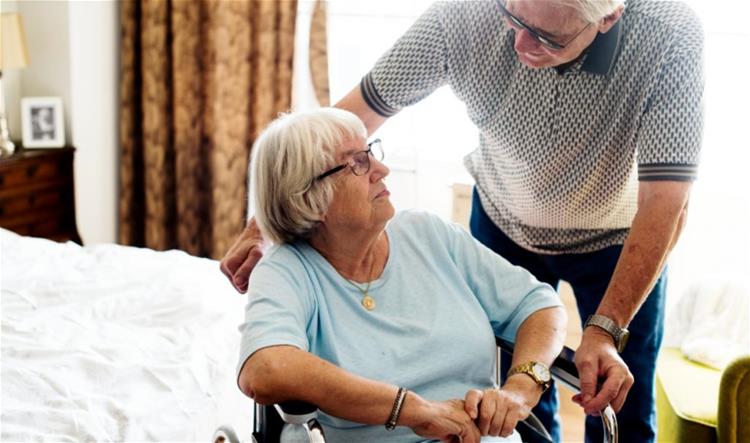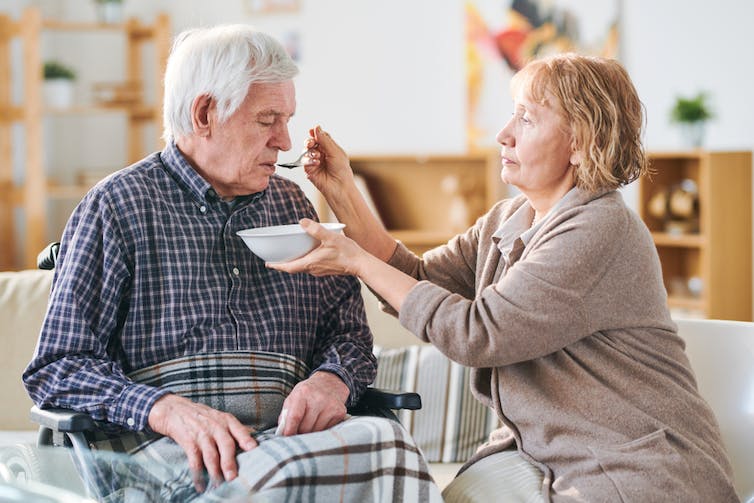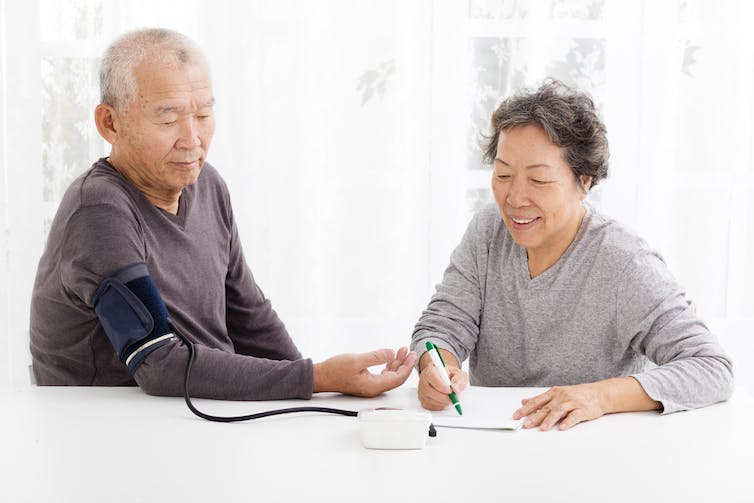
Published: February 2, 2021 | By: Melissa Northwood, McMaster University; Ruheena Sangrar, University of Manitoba and Anna Garnett, Western University
Ninety-three per cent of older Canadians (age 65+) live in the community, and one in four provides care for family or friends with long-term health conditions or disabilities. Challenging circumstances are not a new phenomenon for these caregivers, but COVID-19 has complicated and amplified their situations.
Older caregivers report struggling with increased levels of responsibility, stress and isolation due to COVID-19 and pandemic-related protocols. A survey conducted by the Ontario Caregiver Organization have found 54 per cent of family caregivers have found it harder to manage their caregiving responsibilities since the pandemic began.
Early in the pandemic, there was some recognition of the potential challenges that family caregivers were likely to face. However, the main focus was on controlling community spread of the virus and on institutional settings such as hospitals and long-term care residences.
Greater burden on caregivers
Long-term care residences, populated almost exclusively by older adults, have experienced immense loss as a result of COVID-19, yet most older adults who depend on care rely on family and friends. Without informal caregivers providing the majority of care in the community, these older adults would no longer be able to reside safely in their homes.
Widespread public health efforts to limit COVID-19 spread have led to drastic reductions or closure of community-based services that were intended to protect and support vulnerable older adults. As a result, caregivers cannot access community supports such as: home care services, day programs, respite services and caregiver support groups. Community-based organizations that frequently offer programs suitable for caregivers and their care recipients have been forced to cancel or severely reduce program offerings.
Read more:
After COVID-19’s tragic toll, Canada must improve quality of life in long-term care homes
Caregivers have also lost the assistance of friends and family because of restrictions on the number of social contacts beyond immediate households. As a result, these caregivers have become entirely responsible for the care provision of their often highly vulnerable care recipients, in addition to running a household and caring for themselves. This greater burden of care in combination, with increasing social isolation and loss of time for respite and self-care, has placed caregivers at undue risk for declining health.
The need for collective community action

As health researchers in nursing and rehabilitation sciences, we are seeking to understand how best to support older adults and their caregivers in managing their health and well-being. Our research suggests that communities can play an important role in supporting this invisible caregiver workforce so that they do not become further burdened by this pandemic.
Neighbourhoods and communities can play an important role in supporting this invisible caregiver workforce to reduce additional burdens experienced during the pandemic. The collective mobilization of the community and its members can provide assistance to caregivers in two ways:
- Through facilitating their access to formal supports
- By using creative approaches to provide informal support that respect public health protocols and mandates
For example, public libraries could loan tablets and Wi-Fi hotspot devices as part of their services, as seen in some communities. That would enable older caregivers, who are often on fixed incomes, to benefit from digital connectivity.
Individual community members can volunteer their time to remotely assist caregivers with their digital literacy so that they can recover lost social connections with family and friends via networking sites such as Facebook, or through platforms like FaceTime and Skype.
Fostering caregivers’ online capabilities would also enable them to take advantage of newly adapted online formal supports for their care recipient, such as online therapeutic recreation programs.
Closing service gaps

Compassionate efforts of community members, including individuals and local businesses, can lessen gaps left by loss or reduction of services due to COVID-19. For example, community members can reach out to caregivers and older adults in their neighbourhoods to help with tasks such as going to the grocery store or pharmacy, and provide respite for caregivers by providing virtual or phone visits to the older adults the caregivers are supporting.
A number of community support organizations have taken measures to reduce program sizes or offer physically distanced visits in client homes. Communities could work together to ensure that caregivers are aware of these initiatives, such as Seniors’ Centres Without Walls, and support them in accessing them.
Collective action by communities can include advocating for prioritized COVID-19 vaccination for informal caregivers, especially those who are older adults, and their family members. Early and timely access to vaccines for these vulnerable community members would enable the reinstatement of multiple caregiver supports. Caregivers should be recognized as essential workers as they are instrumental in keeping those most vulnerable in our communities safe at home.
When addressing older adult caregiver needs, there must be careful, measured evaluation of the risks and benefits of COVID-19 physical-distancing and other protective measures. Collectively, we have a responsibility to ensure that we don’t further isolate caregivers for fear of COVID-19 transmission, subsequently placing them at grave risk of health decline due to prolonged caregiver burden.
Melissa Northwood, Assistant Professor, School of Nursing, McMaster University; Ruheena Sangrar, MIRA Trainee and Postdoctoral Research Associate, Centre on Aging, University of Manitoba and Anna Garnett, Assistant Professor, Arthur Labatt Family School of School of Nursing, Faculty of Health Sciences, Western University.
This article is republished from The Conversation under a Creative Commons license. Read the original article.

